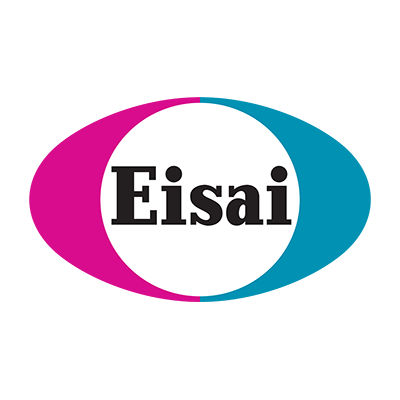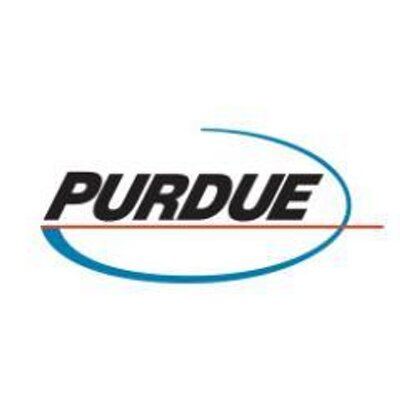预约演示
更新于:2025-05-07
Intervertebral Disc Disease
椎间盘疾病
更新于:2025-05-07
基本信息
别名 DISCOGENIC DISEASE、Disorder of intervertebral disc、IDD + [30] |
简介- |
关联
27
项与 椎间盘疾病 相关的药物作用机制 硫酸软骨素蛋白聚糖调节剂 [+1] |
在研机构 |
原研机构 |
非在研适应症- |
最高研发阶段批准上市 |
首次获批国家/地区 日本 |
首次获批日期2018-03-23 |
作用机制 κ opioid receptor激动剂 [+1] |
在研机构 |
原研机构 |
最高研发阶段批准上市 |
首次获批国家/地区 美国 |
首次获批日期2010-06-30 |
646
项与 椎间盘疾病 相关的临床试验NCT05971329
Pilot Study of ZetaFuse™ Bone Graft for the Treatment of Cervical Degenerative Disc Disease
The goal of this pilot clinical trial is to test the safety and preliminary performance of the ZetaFuse Bone Graft in patient requiring fusion of the C3-C7 vertebral bones due to pain or loss of neurological function.
Participants will be treated with ZetaFuse during surgical intervention to reduce pain and the loss of neurological function.
Participants will be treated with ZetaFuse during surgical intervention to reduce pain and the loss of neurological function.
开始日期2026-09-01 |
申办/合作机构 |
DRKS00031819
Sponsor-initiated, prospective, monocentric, non-interventional clinical observational study (AWB) to evaluate the Transmaxx® ALIF Cage in spine surgery use according to the intended purpose. - PMCF Transmaxx system
开始日期2025-12-31 |
申办/合作机构- |
NCT06825390
Mechanistic Clinical Trial of Auricular Stimulation and Cryogenic Auriculotherapy in Patients With Chronic Low-back Pain, Using Functional Near-infrared Spectroscopy and Magnetic Resonance Imaging
This is a clinical study of patients who have low back pain (for at least 6 months). The goal is to understand, with brain imaging, how auriculotherapy (an acupuncture-like stimulation of the ear) may work to relieve pain. There are 4 total study visits, divided into two pairs of visits that occur before and 5-7 days after receiving either a real or sham auriculotherapy treatment. The cryo-IQ device will be used, to stimulate 7 small areas on both ears with a focused jet of cold as a small amount of compressed gas is released. This is generally not painful, and less invasive, compared to using needles for auriculotherapy.
开始日期2025-07-01 |
申办/合作机构 |
100 项与 椎间盘疾病 相关的临床结果
登录后查看更多信息
100 项与 椎间盘疾病 相关的转化医学
登录后查看更多信息
0 项与 椎间盘疾病 相关的专利(医药)
登录后查看更多信息
6,080
项与 椎间盘疾病 相关的文献(医药)2025-12-31·NMC Case Report Journal
Pitfalls in the Diagnosis and Treatment of Low Back Pain in an Elite Para-athlete Successfully Treated by Transforaminal Full-endoscopic Discectomy with Thermal Annuloplasty: A Case Reports
Article
作者: MIZUTANI, Kozaburo ; KANDA, Yutaro ; SUGIURA, Kosuke ; SOEDA, Saori ; TEZUKA, Fumitake ; YAMASHITA, Kazuta ; KUMON, Masashi ; SAIRYO, Koichi ; MORIMOTO, Masatoshi
2025-12-01·Current Pain and Headache Reports
Biologic Therapies for Discogenic Pain
Review
作者: Lou, Jesse ; Wang, Dajie ; Ryan, Rabiul
2025-09-01·International Journal of Medical Informatics
Deep learning algorithms to assist in imaging diagnosis in individuals with disc herniation or spondylolisthesis: A scoping review
Review
作者: Cazella, Silvio César ; da Silva, William Moraes ; Rech, Rafaela Soares
110
项与 椎间盘疾病 相关的新闻(医药)2025-03-10
Gleamer, leading company in AI medical imaging, today announces that it acquires Pixyl, a pioneer in FDA- and CE-cleared Neuro MRI applications, and Caerus Medical, developer of cutting-edge Lumbar MRI AI solutions. These strategic acquisitions position Gleamer as the only AI provider with an unmatched, proprietary suite of solutions covering all core imaging modalities—X-ray, Mammography, CT, and now, MRI—further solidifying its leadership in the radiology AI market. With its robust portfolio, Gleamer is redefining the future of AI-powered radiology, providing radiologists with best-in-class tools that optimize efficiency, enhance diagnostic accuracy, and accelerate patient care. This latest expansion ensures that Gleamer remains the first choice for institutions seeking comprehensive AI integration across their imaging workflows. “With the addition of Pixyl and Caerus Medical, Gleamer now offers the most extensive proprietary AI-driven imaging portfolio in the industry. This move marks a transformative leap forward, empowering radiologists with cutting-edge MRI applications while strengthening our leadership in medical imaging AI,” said Christian Allouche, CEO & co-founder of Gleamer. “These acquisitions underscore our unwavering commitment to revolutionizing radiology, accelerating the adoption of AI, and delivering superior diagnostic precision.” Pixyl, an award-winning innovator in brain MRI analysis, is recognized for its flagship product Pixyl.Neuro, which has already gained significant traction. The software enables the early detection of neuroinflammatory and neurodegenerative conditions, including Alzheimer’s disease, unlocking life-changing opportunities for early intervention. With new reimbursement pathways emerging in the U.S., Pixyl’s solutions are poised for rapid adoption, reinforcing its role at the forefront of AI-driven radiology innovation. “Joining Gleamer amplifies the impact of our technology, bringing our breakthrough MRI applications to a global audience,” said Senan Doyle, CEO of Pixyl. “Together, we are setting new standards in AI-powered radiology and driving the future of neuroimaging.” Caerus Medical’s AI technology revolutionizes lumbar spine MRI interpretation, offering unparalleled precision in detecting all relevant findings (disc herniation, stenosis, spondylolisthesis etc.). This comprehensive approach enhances workflow efficiency and diagnostic reliability, streamlining the reporting process for radiologists. “The Caerus Medical team is thrilled to become part of Gleamer, the leader in AI-powered radiology,” said David Vittecoq, CEO of Caerus Medical. “This collaboration will fast-track the deployment of our lumbar MRI application and drive groundbreaking advancements in musculoskeletal imaging.” With these acquisitions, Gleamer’s global workforce surpasses 100 employees across seven countries, bolstering its MRI research and development efforts. The integration of Pixyl and Caerus Medical within Gleamer’s AI Factory will accelerate innovation, ensuring the rapid deployment of next-generation imaging solutions that meet the evolving needs of modern radiology.
并购
2025-02-28
·医药速览
美国食品药品监督管理局 (FDA) 于 2024 年 12 月 18 日批准了 remestemcel-L-rknd(商品名 Ryoncil,由 Mesoblast 公司生产),这是一种用于治疗 2 个月及以上的儿童患者类固醇难治性急性移植物抗宿主病 (SR-aGVHD) 的异基因骨髓来源的间充质基质细胞 (MSC) 疗法。 Ryoncil 是首个获得 FDA 批准的 MSC 疗法。
Ryoncil 的上市申请历程可谓一波三折:
第一次被拒:2019 年,Mesoblast 首次提交了 Ryoncil 的上市申请。2020 年,FDA 拒绝了 Mesoblast 的申请,要求其进行至少一项额外的随机对照研究,以提供有关该疗法有效性的进一步证据。 尽管当时 FDA 咨询委员会以 9 票赞成、1 票反对的结果认为现有数据支持 Ryoncil 在 SR-aGVHD 儿童患者中的疗效,但 FDA 工作人员的简报材料表明,可能需要更多数据来支持批准。
第二次被拒:2023 年初重新提交了申请,提供了来自 III 期试验的新的长期生存数据,显示在超过 4 年的随访中,大约 50% 的儿童患者存活。 此外,它还提供了结果,证明该疗法(也称为 Ryoncil)对高风险疾病活动有益。 然而,FDA 在 2023 年 8 月再次拒绝了该申请,要求提供更多关于该产品的数据。
2023 年底,Mesoblast 表示在 A 类会议后已与美国监管机构就 Ryoncil 的批准途径达成一致。 该公司制定了计划,以生成与早期 III 期儿科试验相关的新的效价测定数据。最终,FDA 在 2024 年 12 月 18 日批准了 Mesoblast 的第三次上市授权申请。
Ryoncil® 用于治疗 2 个月及以上的儿童 SR-aGvHD 患者。推荐剂量为 2×106 MSC/kg 体重,通过静脉输注,每周两次,连续 4 周。 在一项针对 54 名 SR-aGvHD 儿童(89% 为 C/D 级)的 3 期试验中,Ryoncil® 治疗在第 28 天的总缓解率 (ORR) 为 70%。4 年生存率为 49%,只有 14% 的患者死于 aGvHD。
基于终生超罕见疾病和高影响力短期疗法的健康经济模型,使用 Ryoncil® 治疗的患者总收益在 320 万美元至 410 万美元之间(包括长期生存获益、成本抵消和成本节省)。
Ryoncil® 每次静脉输注定价 194,000 美元,与体重无关,共回输8次。Mesoblast 已建立 MyMesoblast™,这是一个综合患者服务中心,旨在协助患者和机构获得保险、经济援助和治疗。
Ryoncil® 将由 Cencora 分销,利用其低温物流能力和先进的低温存储基础设施。Mesoblast公司已经开始与美国前45家儿科移植中心进行商业合作,这些中心占据了美国80%的儿科移植市场。
Mesoblast 是一家全球领先的开发用于治疗严重和危及生命的炎症性疾病的同种异体细胞药物的公司。其主打产品包括:
•Ryoncil® (remestemcel-L): 用于治疗儿童类固醇难治性急性移植物抗宿主病 (SR-aGvHD)。
•Revascor®: 用于治疗慢性心力衰竭和儿童先天性心脏病。
•Rexlemestrocel-L: 用于治疗与退行性椎间盘疾病相关的慢性腰痛。
往期链接
“小小疫苗”养成记 | 医药公司管线盘点
人人学懂免疫学| 人人学懂免疫学(语音版)
综述文章解读 | 文献略读 | 医学科普|医药前沿笔记
PROTAC技术| 抗体药物| 抗体药物偶联-ADC
核酸疫苗 | CAR技术| 化学生物学
温馨提示
医药速览公众号目前已经有近12个交流群(好学,有趣且奔波于医药圈人才聚集于此)。进群加作者微信(yiyaoxueshu666)或者扫描公众号二维码添加作者,备注“姓名/昵称-企业/高校-具体研究领域/专业”,此群仅为科研交流群,非诚勿扰。
简单操作即可星标⭐️医药速览,第一时间收到我们的推送
①点击标题下方“医药速览”
②至右上角“...” ③点击“设为星标
临床3期上市批准医药出海临床结果细胞疗法
2025-02-21
FRIDAY, Feb. 21, 2025 -- There is some evidence for epidural steroid injections (ESIs) reducing pain and disability in cervical and lumbar radiculopathies and possibly in lumbar spinal stenosis, according to a study published online Feb. 12 in
Neurology
.
Carmel Armon, M.D., from Loma Linda University School of Medicine in California, and colleagues conducted a systematic review to evaluate the use of ESIs in cervical and lumbar spinal stenosis and radiculopathies. Due to the variability in efficacy measures, differences based on any measure of success were reported as the success rate difference (SRD).
Ninety randomized controlled trials met the inclusion criteria. The researchers found that ESIs probably reduced short-term pain (SRD, −24.0 percent; number needed to treat [NNT], 4) and disability (SRD, −16.0 percent; NNT, 6) and possibly reduced long-term disability (SRD, −11.1 percent; NNT, 9) in cervical and lumbar radiculopathies. The evidence was insufficient to determine whether ESIs reduced long-term pain in radiculopathies. ESIs possibly reduced short-term (SRD, −26.2 percent; NNT, 4) and long-term (SRD, −11.8 percent; NNT, 8) disability in lumbar spinal stenosis, but there was no reduction in short-term pain; insufficient evidence was seen for determining whether ESIs reduced long-term pain. The evidence was insufficient for determining the effectiveness of ESIs in cervical spinal stenosis.
"The systematic review found evidence that ESIs are probably effective in reducing short-term pain and disability caused by radiculopathy and possibly effective in reducing short-term disability, but not pain, in lumbar spinal stenosis," the authors write.
Several authors disclosed ties to industry.
Abstract/Full Text
Whatever your topic of interest,
subscribe to our newsletters
to get the best of Drugs.com in your inbox.
临床结果
分析
对领域进行一次全面的分析。
登录
或

生物医药百科问答
全新生物医药AI Agent 覆盖科研全链路,让突破性发现快人一步
立即开始免费试用!
智慧芽新药情报库是智慧芽专为生命科学人士构建的基于AI的创新药情报平台,助您全方位提升您的研发与决策效率。
立即开始数据试用!
智慧芽新药库数据也通过智慧芽数据服务平台,以API或者数据包形式对外开放,助您更加充分利用智慧芽新药情报信息。
生物序列数据库
生物药研发创新
免费使用
化学结构数据库
小分子化药研发创新
免费使用





